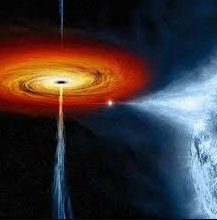
Scientists observe black hole behaviour predicted by Einstein, marking a major milestone in astrophysics
A team of scientists has confirmed the existence of plunging regions around black holes, a phenomenon predicted by Albert Einstein’s theory of general relativity. This discovery provides compelling evidence of some of the most intense gravitational forces identified in the universe.
Einstein’s theory proposed that particles cannot maintain stable orbits near a black hole and, instead, rapidly spiral inwards, approaching the speed of light. This behaviour has now been observed for the first time, offering a glimpse into the deepest mechanics of black holes.
Dr Andrew Mummery, who led the study at Oxford University, explained the significance of the finding: “Einstein’s theory suggested this final plunge, but this is the first time we’ve been able to demonstrate it in action. Think of it as a river transforming into a waterfall – we’ve previously studied the river, but now we are witnessing the waterfall in its full force.”
The research, conducted by Oxford University’s Physics Department, focused on X-ray data to explore the gravitational effects of black holes, concentrating particularly on smaller, relatively close black holes. By studying the regions just before the plunge, the team has gained crucial insights into the strongest gravitational fields known to exist.
The study confirmed that this rapid fall of plasma, observed at the very edge of a black hole, is an extreme display of matter responding to gravity in its most powerful form. This revelation opens up a new avenue for studying black holes, using advanced techniques that could transform our understanding of the universe.
For years, astrophysicists debated whether the plunging region would be detectable. The Oxford team’s breakthrough came after extensive model development, and the detection was made possible through X-ray telescopes and data gathered from the International Space Station.
This discovery, published in the Monthly Notices of the Astronomical Society, focuses on smaller black holes close to Earth. In the coming months, a second team from Oxford plans to capture footage of larger, more distant black holes, promising further insights into this cosmic phenomenon.












